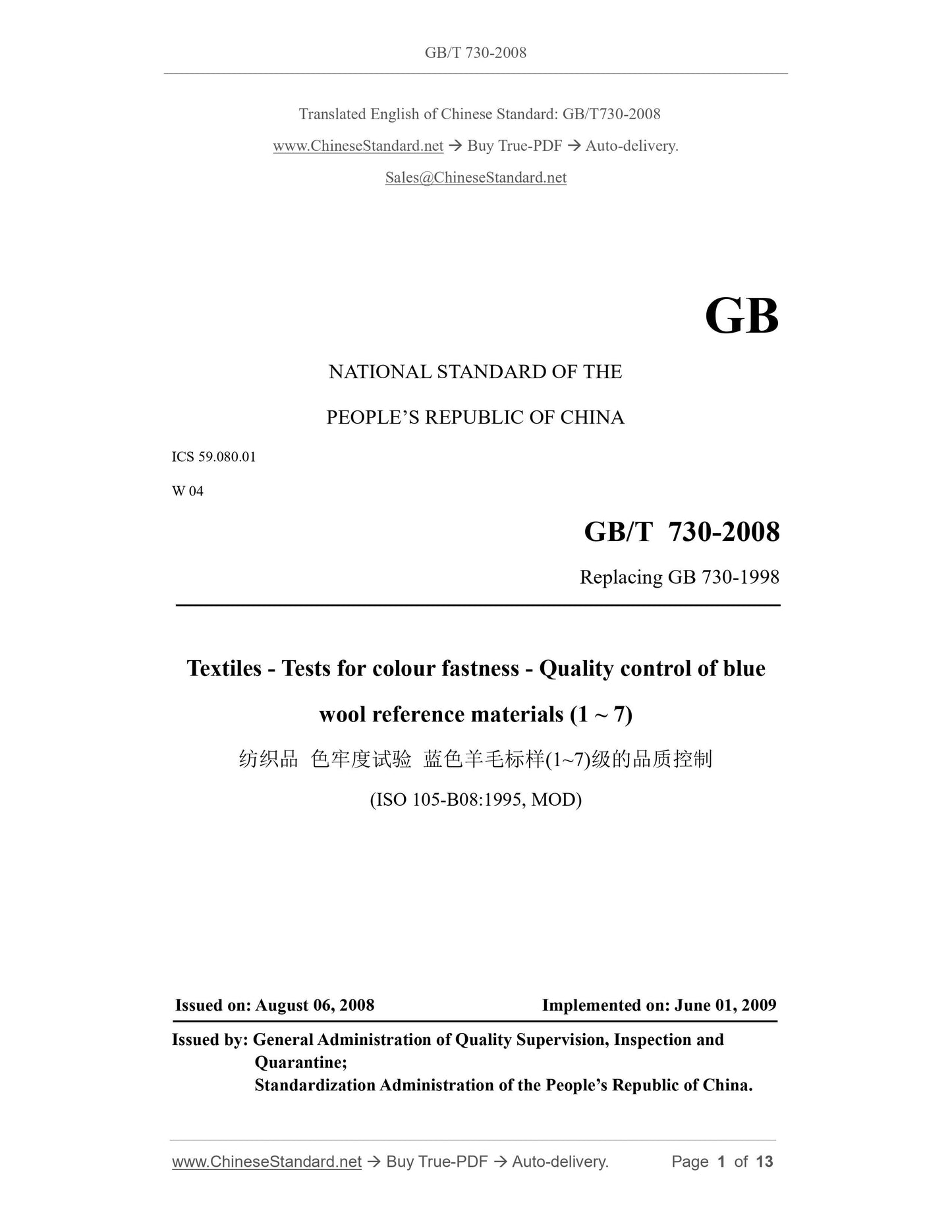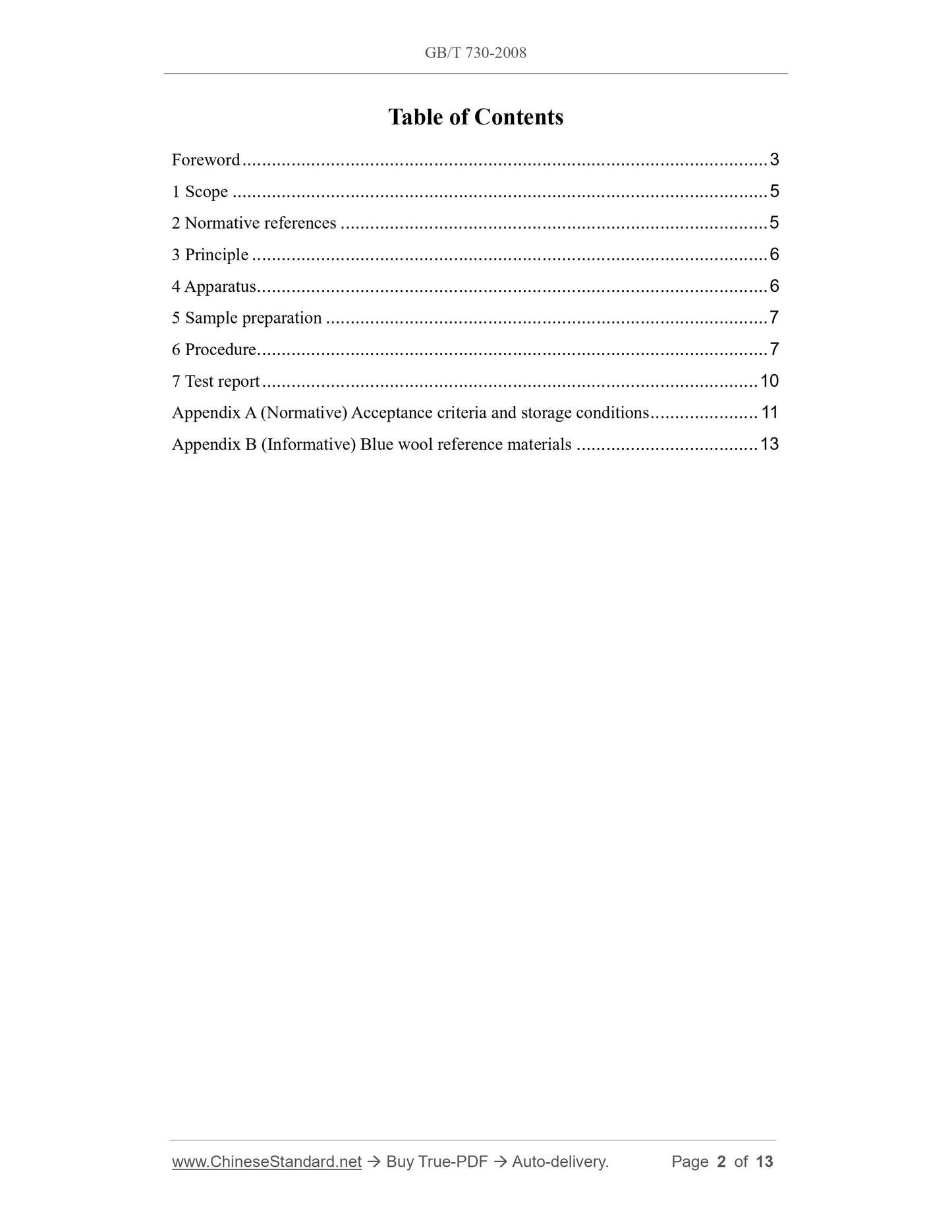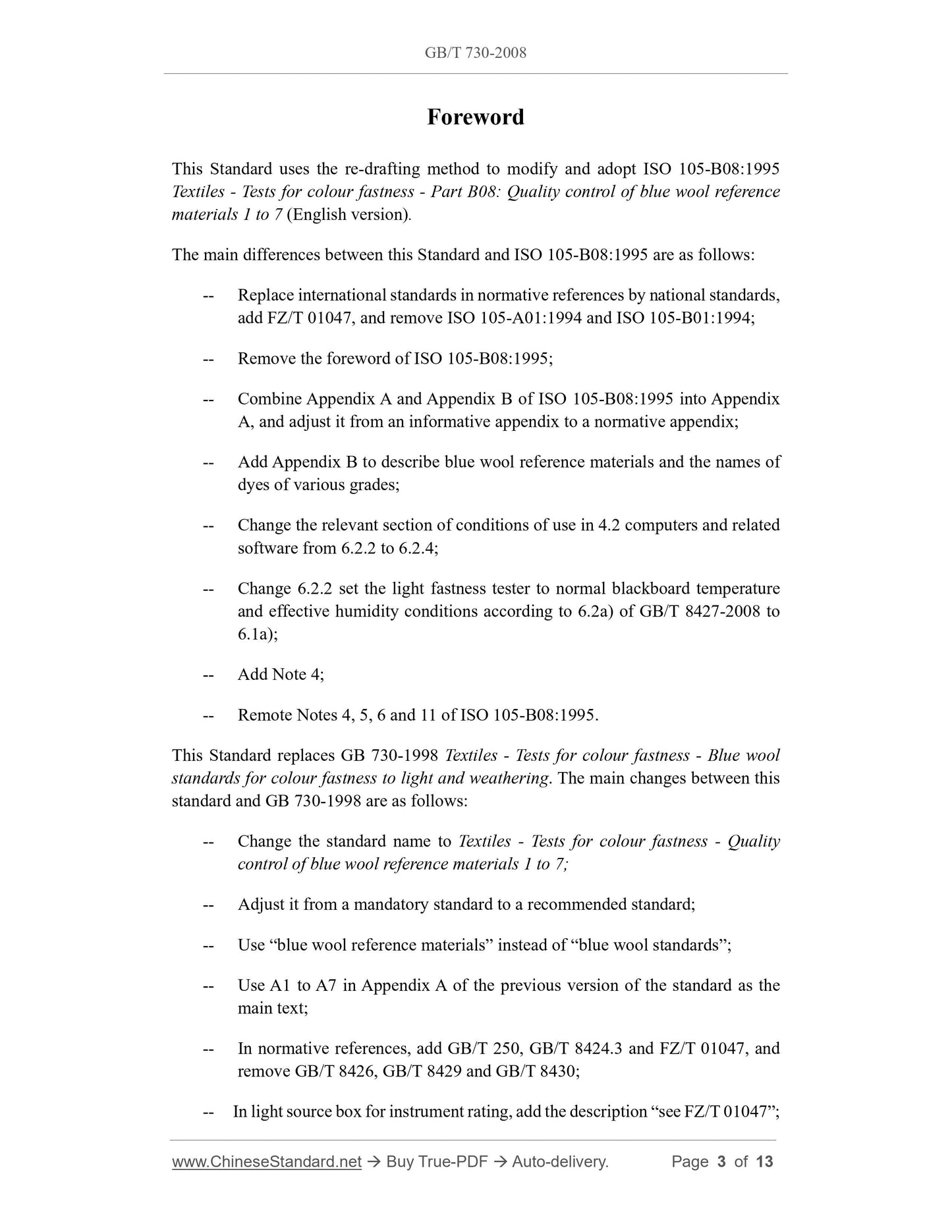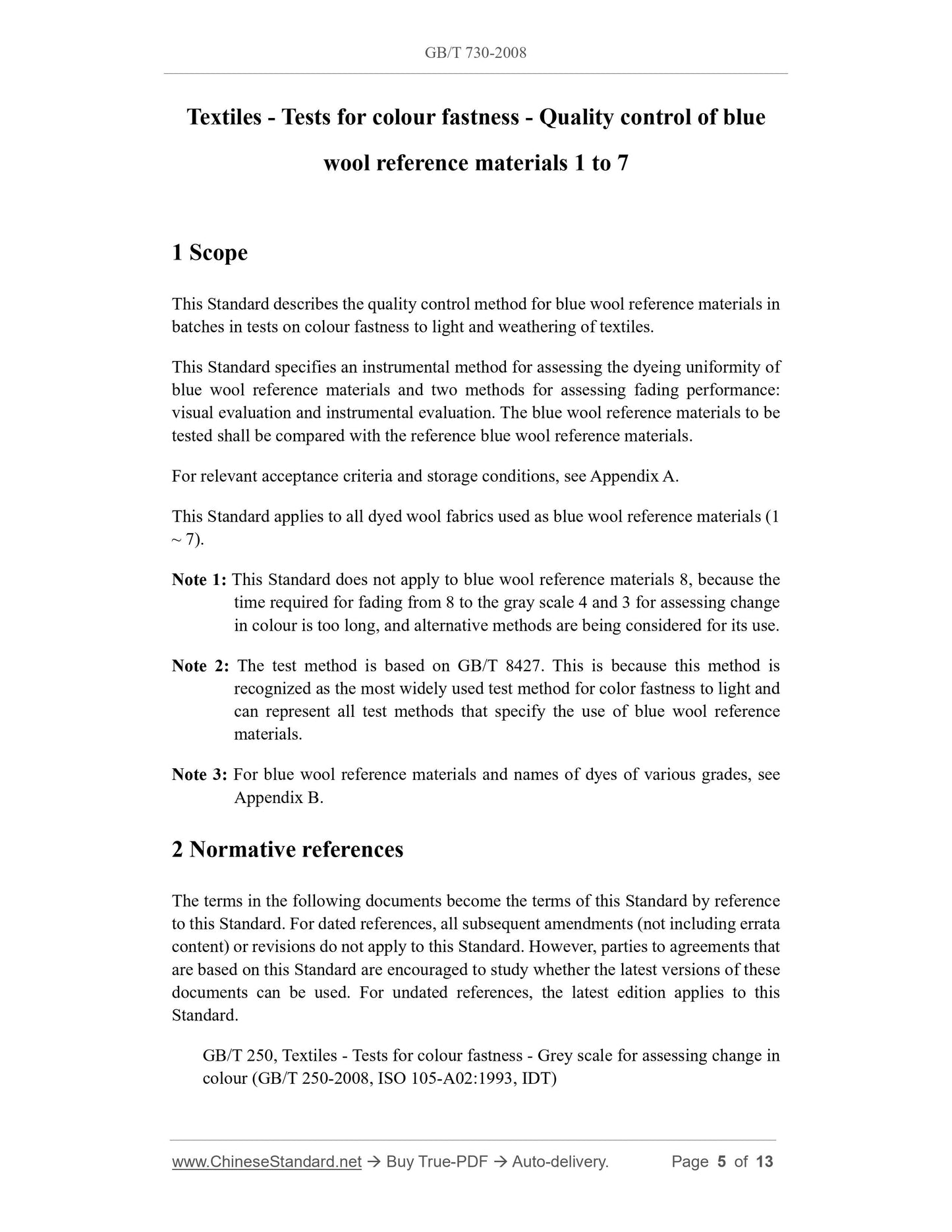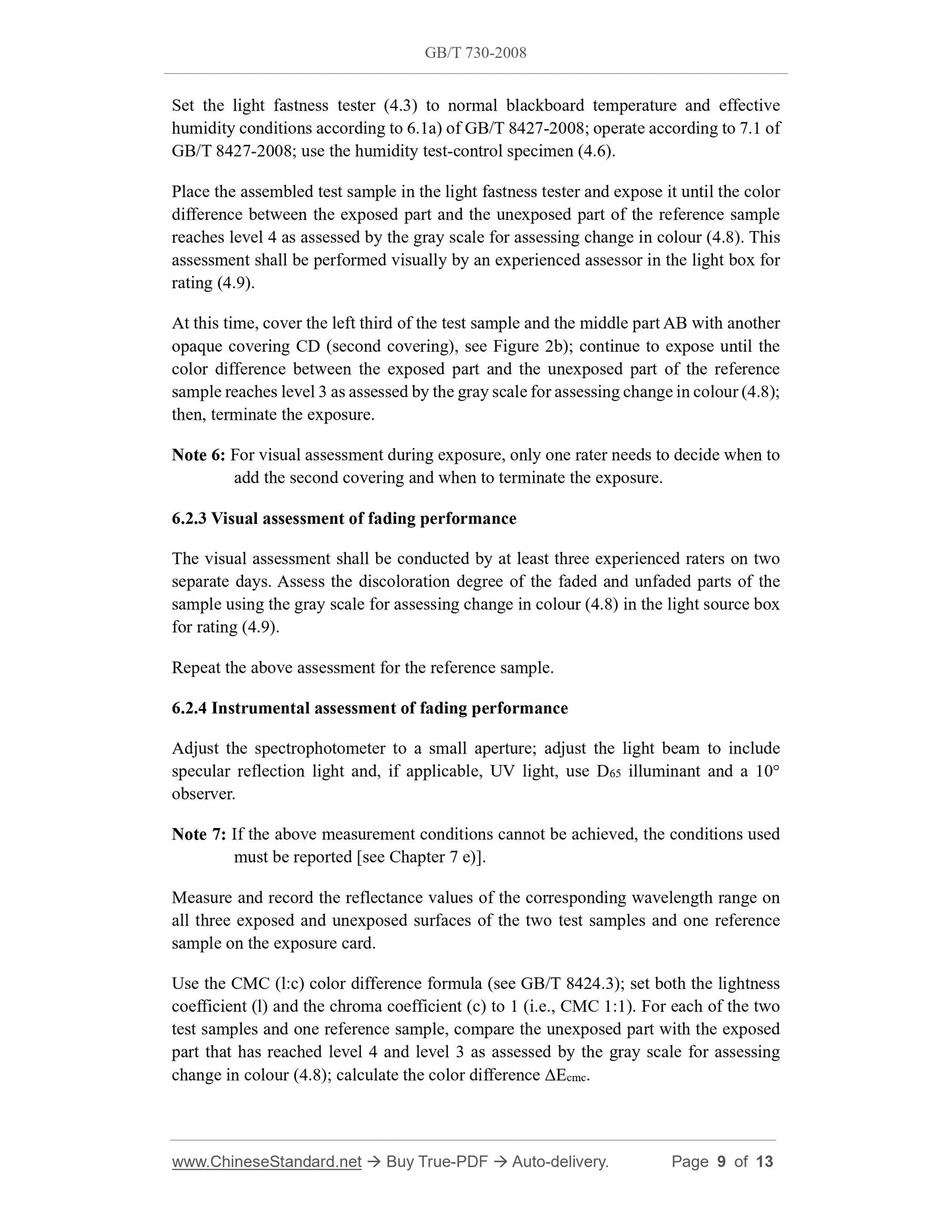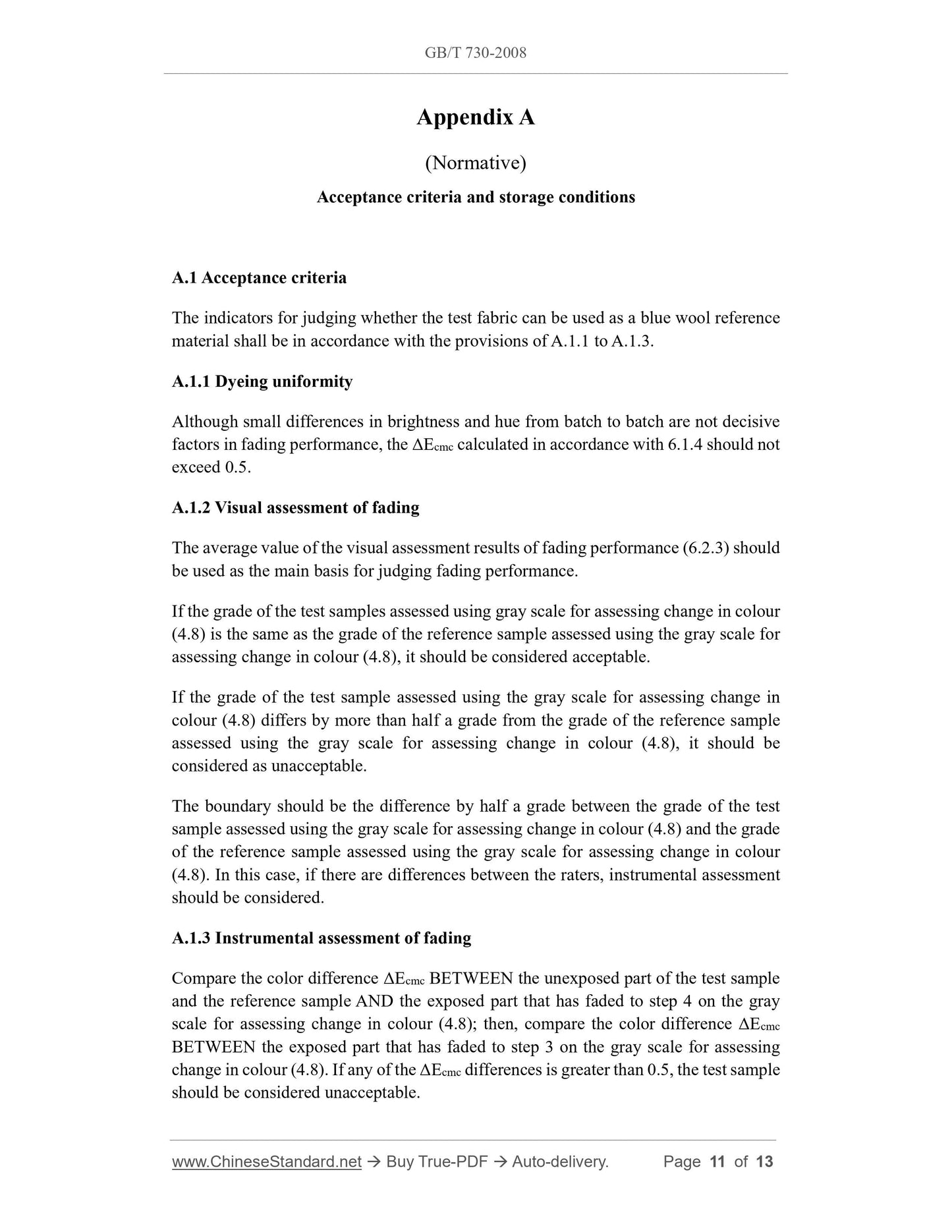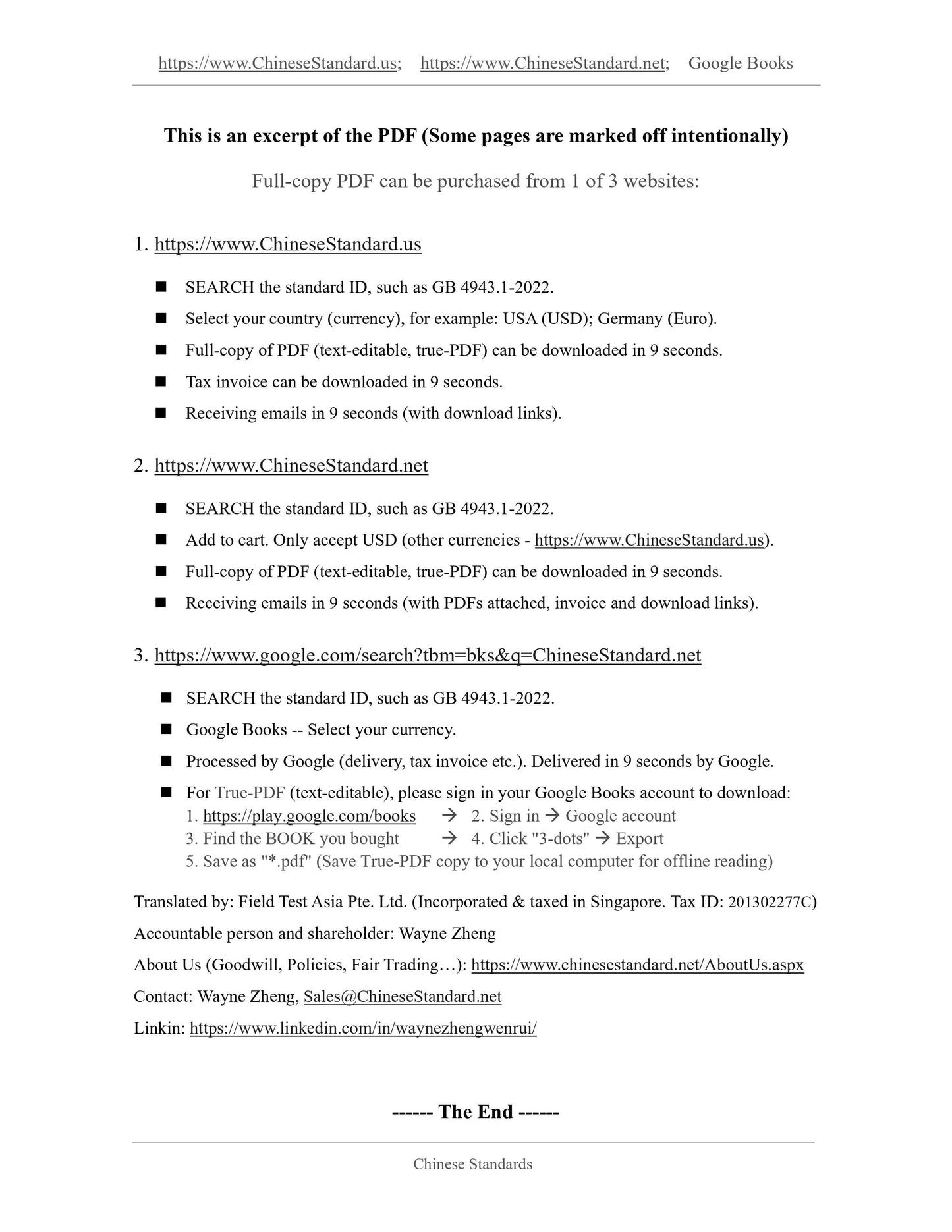1
/
of
7
www.ChineseStandard.us -- Field Test Asia Pte. Ltd.
GB/T 730-2008 English PDF (GB/T730-2008)
GB/T 730-2008 English PDF (GB/T730-2008)
Regular price
$160.00
Regular price
Sale price
$160.00
Unit price
/
per
Shipping calculated at checkout.
Couldn't load pickup availability
GB/T 730-2008: Textiles -- Tests for colour fastness -- Quality control of Blue wool reference materials 1 to 7
Delivery: 9 seconds. Download (and Email) true-PDF + Invoice.Get Quotation: Click GB/T 730-2008 (Self-service in 1-minute)
Newer / historical versions: GB/T 730-2008
Preview True-PDF
Scope
This Standard describes the quality control method for blue wool reference materials inbatches in tests on colour fastness to light and weathering of textiles.
This Standard specifies an instrumental method for assessing the dyeing uniformity of
blue wool reference materials and two methods for assessing fading performance.
visual evaluation and instrumental evaluation. The blue wool reference materials to be
tested shall be compared with the reference blue wool reference materials.
For relevant acceptance criteria and storage conditions, see Appendix A.
This Standard applies to all dyed wool fabrics used as blue wool reference materials (1
~ 7).
Note 1.This Standard does not apply to blue wool reference materials 8, because the
time required for fading from 8 to the gray scale 4 and 3 for assessing change
in colour is too long, and alternative methods are being considered for its use.
Note 2.The test method is based on GB/T 8427.This is because this method is
recognized as the most widely used test method for color fastness to light and
can represent all test methods that specify the use of blue wool reference
materials.
Note 3.For blue wool reference materials and names of dyes of various grades, see
Appendix B.
Basic Data
| Standard ID | GB/T 730-2008 (GB/T730-2008) |
| Description (Translated English) | Textiles -- Tests for colour fastness -- Quality control of Blue wool reference materials 1 to 7 |
| Sector / Industry | National Standard (Recommended) |
| Classification of Chinese Standard | W04 |
| Classification of International Standard | 59.080.01 |
| Word Count Estimation | 9,943 |
| Date of Issue | 2008-08-06 |
| Date of Implementation | 2009-06-01 |
| Older Standard (superseded by this standard) | GB 730-1998 |
| Quoted Standard | GB/T 250; GB/T 8424.3; GB/T 8427-2008; FZ/T 01047 |
| Adopted Standard | ISO 105-B08-1995, MOD |
| Regulation (derived from) | National Standard Approval Announcement 2008 No.12 (Total No.125) |
| Issuing agency(ies) | General Administration of Quality Supervision, Inspection and Quarantine of the People's Republic of China, Standardization Administration of the People's Republic of China |
| Summary | This standard specifies the textile color fastness to light and weathering test batches of about blue wool standard product quality control methods. This standard specifies a standard instrument rating blue wool dyeing uniformity of approach and visual assessment of two kinds of assessment and evaluation instruments fade performance. Blue wool standard sample to be tested with a reference to the blue wool standard for comparison. And storage conditions relating to acceptance criteria in Appendix A. This standard applies to all used blue wool standard (1-7) grade dyed wool fabric. |
Share
